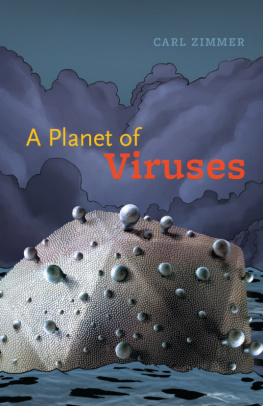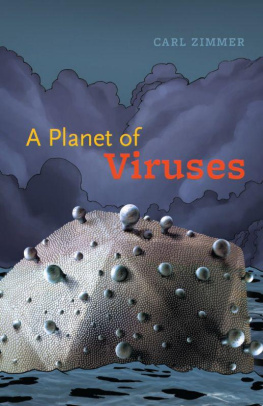Table of Contents
List of tables
- Tables in Chapter 2
- Tables in Chapter 10
- Tables in Chapter 15
- Tables in Chapter 16
- Tables in Chapter 17
- Tables in Chapter 20
- Tables in Chapter 26
- Tables in Chapter 28
- Tables in Chapter 34
- Tables in Chapter 38
List of illustrations
- Figures in Chapter 1
- Figures in Chapter 2
- Figures in Chapter 3
- Figures in Chapter 4
- Figures in Chapter 5
- Figures in Chapter 6
- Figures in Chapter 7
- Figures in Chapter 8
- Figures in Chapter 9
- Figures in Chapter 10
- Figures in Chapter 11
- Figures in Chapter 12
- Figures in Chapter 13
- Figures in Chapter 14
- Figures in Chapter 15
- Figures in Chapter 16
- Figures in Chapter 17
- Figures in Chapter 18
- Figures in Chapter 19
- Figures in Chapter 20
- Figures in Chapter 21
- Figures in Chapter 22
- Figures in Chapter 23
- Figures in Chapter 24
- Figures in Chapter 25
- Figures in Chapter 26
- Figures in Chapter 27
- Figures in Chapter 28
- Figures in Chapter 29
- Figures in Chapter 30
- Figures in Chapter 31
- Figures in Chapter 32
- Figures in Chapter 33
- Figures in Chapter 34
- Figures in Chapter 35
- Figures in Chapter 36
- Figures in Chapter 37
- Figures in Chapter 38
Landmarks
Table of Contents
Viruses
From Understanding to Investigation
Susan Payne
Department of Veterinary Medicine and Biomedical Sciences, Texas A&M University, College Station, Texas, United States

Copyright
Academic Press is an imprint of Elsevier
125 London Wall, London EC2Y 5AS, United Kingdom
525 B Street, Suite 1800, San Diego, CA 92101-4495, United States
50 Hampshire Street, 5th Floor, Cambridge, MA 02139, United States
The Boulevard, Langford Lane, Kidlington, Oxford OX5 1GB, United Kingdom
Copyright 2017 Elsevier Inc. All rights reserved.
No part of this publication may be reproduced or transmitted in any form or by any means, electronic or mechanical, including photocopying, recording, or any information storage and retrieval system, without permission in writing from the publisher. Details on how to seek permission, further information about the Publishers permissions policies and our arrangements with organizations such as the Copyright Clearance Center and the Copyright Licensing Agency, can be found at our website: www.elsevier.com/permissions.
This book and the individual contributions contained in it are protected under copyright by the Publisher (other than as may be noted herein).
Notices
Knowledge and best practice in this field are constantly changing. As new research and experience broaden our understanding, changes in research methods, professional practices, or medical treatment may become necessary.
Practitioners and researchers must always rely on their own experience and knowledge in evaluating and using any information, methods, compounds, or experiments described herein. In using such information or methods they should be mindful of their own safety and the safety of others, including parties for whom they have a professional responsibility.
To the fullest extent of the law, neither the Publisher nor the authors, contributors, or editors, assume any liability for any injury and/or damage to persons or property as a matter of products liability, negligence or otherwise, or from any use or operation of any methods, products, instructions, or ideas contained in the material herein.
British Library Cataloguing-in-Publication Data
A catalogue record for this book is available from the British Library
Library of Congress Cataloging-in-Publication Data
A catalog record for this book is available from the Library of Congress
ISBN: 978-0-12-803109-4
For Information on all Academic Press publications visit our website at https://www.elsevier.com/books-and-journals

Publisher: Mica Haley
Acquisitions Editor: Linda Versteeg-Buschman
Editorial Project Manager: Fenton Coulthurst
Production Project Manager: Chris Wortley
Designer: Mark Rogers
Typeset by MPS Limited, Chennai, India
Illustrations: Illustrations for this book were provided by Marcy Edelstein, to whom the publisher would like to extend their thanks.
About the Author
Dr. Susan Payne is an associate professor in the Department of Veterinary Pathobiology at the Texas A&M University, United States. During her career, she has mentored graduate and undergraduate students at three universities and has taught virology to undergraduate, graduate, medical, and veterinary students. Those courses are the basis for this textbook. She has also had an active research career and has written over 40 peer reviewed research and review articles. She serves as an ad hoc reviewer for several virology journals. She currently lives in Caldwell, Texas with her husband, mom, five cats, one dog, nine goats, one donkey, eight chickens (if the dog has not eaten one recently), and eight guinea fowls. She is most easily available in email at .
Preface
This book, Viruses: From Understanding to Investigation, was inspired by a long career of teaching and research. My students have included undergraduate, graduate, medical, and veterinary students.
As regards the book title, my intent is to lead students of virology from a basic understanding to an interest in the investigations that have provided the information contained herein. The focus of this textbook is on animal and human viruses, only because these have been the focus of my research and teaching for many years. The viruses of plants, fungi, bacteria, and single-celled organisms are certainly no less interesting.
There is a huge amount of information about viruses available online, in journals, books, websites, and blogs. So why the need for another virology textbook? My intent was to organize and present a thoughtful, understandable, and up-to-date summary of the volumes of information available for consumption elsewhere. While every textbook, including this one, contains many facts, I have tried to emphasize general concepts.
With 38 chapters, this book contains more than enough material for a semester long course in introductory virology. The book is geared toward students with some background in cell biology, microbiology, immunology, and/or biochemistry, and I hope that it will be useful for both undergraduate and beginning graduate students. I also hope that no instructor will try to cover all of the material contained herein during a single semester. The book is organized into two parts, the first nine chapters cover topics including an introduction to viruses (containing information on replication cycle, diversity, taxonomy, and outcomes of virus infection), structure, interactions with the host cell, methods for studying viruses, immunity to viruses, and introductions to viral epidemiology, evolution, and pathogenesis. There are also chapters that serve as introductions to RNA and DNA viruses. I imagine that this will be more than enough information for many instructors and students.













